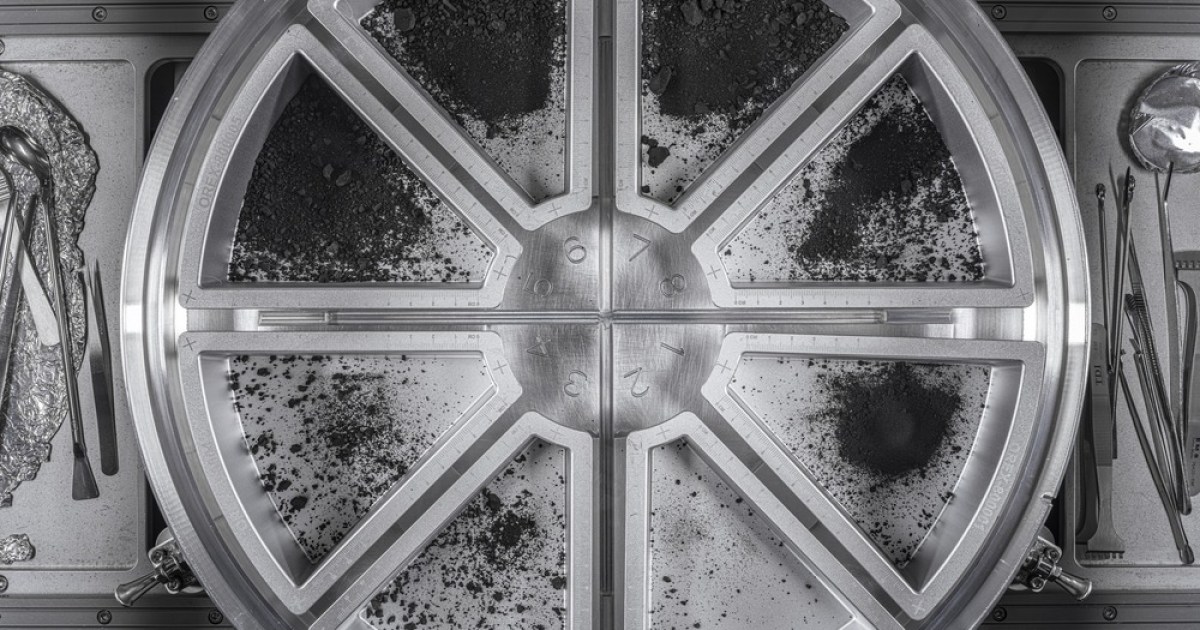When the OSIRIS-REx dropped a capsule in the Utah desert last year, it made headlines around the globe for returning NASA’s first sample of an asteroid to Earth. Scientists were eager to get their hands on the sample of asteroid Bennu to learn about the early formation of the solar system, but actually getting at the sample proved to be rather trickier than imagined.
Scientists were able to extract 70 grams of material from the sample canister relatively easily, making it by far the largest asteroid sample ever brought to Earth, but two troublesome fasteners made it difficult to extract the rest of the sample. The team knew it had plenty more sample inside, but it had to be patient as special new tools were constructed that could undo the fasteners without losing a single gram of the precious sample.
Now, NASA has revealed that the mission delivered a total of 4.29 ounces (121.6 grams) of material from Bennu, more than twice the mission’s goal of 60 grams. The team was able to fully remove the troublesome fasteners in January this year and completely disassemble the part holding the sample, called the Touch-and-Go Sample Acquisition Mechanism (TAGSAM) head. That let the researchers access the remaining 51 grams to go along with the 70 grams previously collected.
Next, the sample will be shared between NASA and various U.S. and international research organizations. This includes sending some of the sample to the Japanese Space Agency, JAXA, which was responsible for the first-ever return of a sample to Earth with its Hayabusa and Hayabusa 2 missions, which dropped off samples in 2010 and 2020, respectively. JAXA shared a portion of the 5 grams of sample it collected from asteroid Ryugu with NASA, and now NASA will share a portion of its sample from Bennu in return.
Some of the Bennu sample will also be set aside for preservation to be examined with new and more powerful instruments as these are developed over time. NASA says it will preserve at least 70% of the sample at its Johnson Space Center facility in Houston “for further research by scientists worldwide, including future generations.”
Editors’ Recommendations

